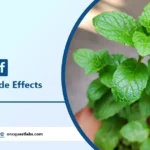Oil pulling is an ancient Ayurvedic practice that involves swishing oil in the mouth to promote oral health and overall well-being. Originating in India over 3,000 years ago, this technique was traditionally used as a natural remedy to cleanse the body and strengthen the teeth and gums. The practice typically involves using oils like coconut, sesame, or sunflower, which are believed to help “pull” out toxins from the mouth.
In recent years, oil pulling has gained popularity in modern wellness circles due to its purported benefits, such as improving oral hygiene, whitening teeth, and reducing bad breath. As more people seek natural and holistic approaches to health, oil pulling has become a trendy alternative to conventional dental care, often praised for its simplicity and potential health advantages. However, as with many wellness trends, it’s important to understand both the benefits and limitations of this practice.
Contents
What is Oil Pulling?
Oil pulling is a simple oral hygiene practice rooted in traditional Ayurvedic medicine. It involves swishing a tablespoon of oil in the mouth for 15-20 minutes, then spitting it out. The idea behind oil pulling is that the oil can “pull” out harmful bacteria, toxins, and other impurities from the mouth, improving oral health in the process.
Commonly Used Oils
- Coconut Oil: Popular for its pleasant taste and antibacterial properties, coconut oil is one of the most commonly used oils for oil pulling.
- Sesame Oil: Traditionally used in Ayurveda, sesame oil has been favored for its ability to support oral and dental health.
- Sunflower Oil: Another option that is often used due to its availability and neutral flavor, sunflower oil is also believed to have benefits for oral health.
Benefits of Oil Pulling
By swishing oil in your mouth for a few minutes each day, you may experience several positive effects on your oral health and overall well-being. Here are the top 10 benefits of oil pulling explained in detail:
1. Improves Oral Health
Oil pulling works by pulling out harmful bacteria from the mouth, reducing the risk of cavities, tooth decay, and gum diseases like gingivitis. Regular oil pulling helps decrease the number of bad bacteria and promotes a healthier balance of oral flora. This ancient practice supports oral hygiene by reaching areas that traditional brushing and flossing might miss.
2. Whitens Teeth
Many people find oil pulling to be a natural alternative for teeth whitening. Oils like coconut oil have properties that help break down plaque and stains on the teeth, leading to a whiter smile. Unlike chemical whitening treatments, oil pulling is gentle on the enamel and gums, making it suitable for long-term use without side effects like sensitivity.
3. Freshens Breath
Bad breath, or halitosis, often stems from bacteria buildup in the mouth. Oil pulling helps eliminate the root causes of bad breath by removing bacteria and toxins that accumulate on the tongue, gums, and teeth. It also helps in neutralizing harmful acids and promoting a fresh, clean mouth feel.
4. Strengthens Gums and Teeth
The regular practice of oil pulling can strengthen your gums and teeth by reducing plaque and inflammation. This helps in preventing gum recession, sensitivity, and bleeding. Strengthening the gums also contributes to better overall oral health, reducing the likelihood of tooth loss or damage over time.
5. Detoxifies the Body
According to Ayurvedic tradition, oil pulling aids in removing toxins from the body. This cleansing process starts in the mouth and can have far-reaching effects on overall health. By eliminating harmful bacteria and toxins from the mouth, oil pulling reduces the toxic load on the body, potentially improving immune function and overall well-being.
6. Reduces Inflammation
Chronic inflammation in the mouth, particularly around the gums, is linked to various oral health issues, including periodontitis. Oil pulling helps soothe inflamed gums, reduces swelling, and promotes healing. The anti-inflammatory properties of oils like sesame or coconut can assist in lowering inflammation not only in the mouth but also throughout the body.
7. Boosts Immunity
With the reduction of harmful bacteria and toxins through oil pulling, the immune system has fewer external threats to combat. A cleaner mouth means fewer pathogens entering the bloodstream through the gums, leading to improved immune responses and potentially reduced systemic infections and illnesses.
8. Improves Skin Health
Some proponents of oil pulling believe that removing toxins from the body through the mouth can improve skin conditions such as acne, eczema, and other inflammatory skin disorders. By cleansing the body internally, oil pulling might help reduce breakouts and give the skin a clearer, healthier appearance.
9. Reduces Jaw Pain
Oil pulling may also help alleviate jaw pain, especially for individuals suffering from TMJ disorder or those who grind their teeth at night. The practice encourages relaxation of the facial muscles and may reduce the inflammation that contributes to jaw discomfort, providing relief over time.
10. Supports Overall Oral Hygiene
When oil pulling is added to your regular oral care routine, it enhances overall oral hygiene. It helps remove debris from hard-to-reach areas, reduce tartar buildup, and prevent cavities. Oil pulling can be a powerful tool to keep your mouth clean and healthy when used in conjunction with brushing and flossing.
Side Effects of Oil Pulling
While oil pulling has many advocates due to its potential benefits, it’s important to recognize that there can be side effects as well. These effects, though typically mild, may arise due to improper technique, overuse, or individual sensitivity. Here are 10 possible side effects of oil pulling:
1. Nausea or Gag Reflex
Some people experience nausea or a gag reflex when swishing oil in their mouth, especially when first starting out. The texture and sensation of having oil in the mouth can trigger discomfort, particularly if too much oil is used at once. Starting with a smaller amount of oil may help mitigate this reaction.
2. Sore Jaw or Facial Muscles
Oil pulling involves swishing oil vigorously for up to 20 minutes, which can lead to muscle soreness in the jaw or face, particularly for beginners. Over time, the muscles typically adjust, but starting with shorter sessions may help prevent this discomfort.
3. Lip and Cheek Dryness
Prolonged swishing can cause dryness or chapping around the lips and cheeks. This occurs because of the constant movement and stretching of the mouth muscles. Applying a lip balm before and after oil pulling can help alleviate this issue.
4. Upset Stomach
Swallowing some of the oil during pulling can lead to an upset stomach or indigestion, as the oil may carry bacteria and toxins that should be expelled, not ingested. To avoid this, be mindful not to swallow the oil and spit it out promptly after the session.
5. Potential for Lipid Pneumonia
If oil is accidentally inhaled into the lungs during the swishing process, it can cause lipid pneumonia, a rare but serious condition. It’s important to perform oil pulling carefully and avoid excessive talking or breathing in while swishing to reduce this risk.
6. Increased Sensitivity in Teeth and Gums
Some users report increased sensitivity in their teeth or gums after oil pulling. This may occur if oil pulling is overdone or performed too vigorously, irritating the gums or exposing sensitive parts of the teeth. Reducing the frequency or duration of oil pulling may help alleviate this sensitivity.
7. Diarrhea or Digestive Issues
In some cases, oil pulling may stimulate the digestive system, leading to loose stools or diarrhea, especially if the oil is inadvertently swallowed. This effect is usually temporary and subsides once the body adjusts to the practice.
8. Headaches
Some individuals may experience mild headaches after starting oil pulling, particularly if their body is detoxifying. The theory is that the release of toxins can cause temporary symptoms like headaches as the body adjusts. If the headaches persist, it may be worth reducing the frequency of oil pulling.
9. Unpleasant Aftertaste
The taste of certain oils, such as sesame or coconut oil, can linger in the mouth after oil pulling, leading to an unpleasant aftertaste. This can often be resolved by thoroughly rinsing the mouth with water and brushing the teeth afterward.
10. Allergic Reactions
Though rare, some people may experience allergic reactions to certain oils used for pulling. Symptoms can include rashes, itching, or swelling of the lips and mouth. If any signs of an allergic reaction occur, it’s important to stop oil pulling immediately and consult a healthcare provider. Testing a small amount of oil on the skin before starting the practice can help identify potential sensitivities.
Understanding the possible side effects of oil pulling helps ensure that you approach this practice with awareness and caution. Most side effects can be minimized by using the correct technique, choosing the right oil, and adjusting the duration and frequency of the practice.
How to Perform Oil Pulling
Oil pulling is easy to incorporate into your daily routine with a few simple steps. Here’s how you can get started:
Step-by-Step Instructions
1. Choosing the Right Oil
- Coconut Oil: Best for beginners due to its mild taste and antibacterial properties.
- Sesame Oil: A traditional option in Ayurveda, known for its benefits in oral health.
- Sunflower Oil: A neutral-tasting alternative that some prefer for its availability.
Choose an oil that suits your taste and preferences. Organic, cold-pressed oils are often recommended to avoid additives.
2. Proper Technique for Swishing the Oil
- Measure: Take 1 tablespoon of your chosen oil.
- Swish: Gently swish the oil around your mouth, moving it between your teeth and gums. Don’t swallow the oil or let it drip down your throat. The swishing should be relaxed and gentle to avoid straining your jaw.
- Spit: After 15-20 minutes, spit the oil into a trash can, not the sink, to avoid clogging. The oil will be cloudy, indicating that it has collected bacteria and toxins.
3. Duration and Frequency
- Duration: Swish the oil for about 15-20 minutes. This duration allows the oil to thoroughly mix with your saliva and absorb impurities without causing discomfort.
- Frequency: For best results, oil pulling should be practiced daily. If daily practice is difficult, aim for at least three to four times a week.
Tips for Beginners
1. How to Gradually Increase Duration
If you’re new to oil pulling, 15-20 minutes might feel overwhelming. Start with shorter durations:
- Begin with 5 minutes and gradually increase by a minute or two each day until you reach the recommended 15-20 minutes.
- Listen to your body and take breaks if needed.
2. Best Time to Practice
The optimal time for oil pulling is first thing in the morning, on an empty stomach, before eating or drinking anything. This helps cleanse your mouth of overnight bacteria and prepares you for the day.
However, oil pulling can be done at any time of the day, as long as you follow up by rinsing your mouth and brushing your teeth.
Who Should Avoid Oil Pulling?
- Individuals with TMJ Disorders or Jaw Pain: The swishing motion can worsen jaw discomfort.
- People with Dental Work: Those with fillings, crowns, or braces may experience discomfort or damage.
- Pregnant or Breastfeeding Women: Consult a healthcare provider due to limited research on safety.
- Those with Allergies: Avoid if you’re allergic to specific oils like sesame or coconut.
- Individuals with Severe Oral Health Issues: Seek professional dental treatment for significant problems instead.
Consult with a healthcare provider if you have any concerns or pre-existing conditions.
Conclusion
Oil pulling can benefit oral health by reducing bacteria, improving hygiene, and freshening breath. While it shows promise, it’s not a replacement for regular brushing and flossing. Side effects like jaw pain or allergic reactions may occur. Consulting a healthcare professional before starting oil pulling is recommended to ensure it fits your health needs.
FAQs About Oil Pulling
What is oil pulling, and how do I do it?
Oil pulling involves swishing oil in your mouth for 15-20 minutes to improve oral health. Simply take a tablespoon of oil, swish, and spit it out.
What are the main benefits of oil pulling?
Oil pulling can reduce harmful bacteria, improve oral hygiene, freshen breath, and may help prevent gum disease.
Can oil pulling replace brushing and flossing?
No, oil pulling should complement brushing and flossing, not replace them.
Are there any side effects of oil pulling?
Possible side effects include jaw pain, dry mouth, and allergic reactions. Rarely, improper technique can lead to lipid pneumonia.
How often should I do oil pulling?
Oil pulling can be done daily, usually in the morning, for 15-20 minutes.





